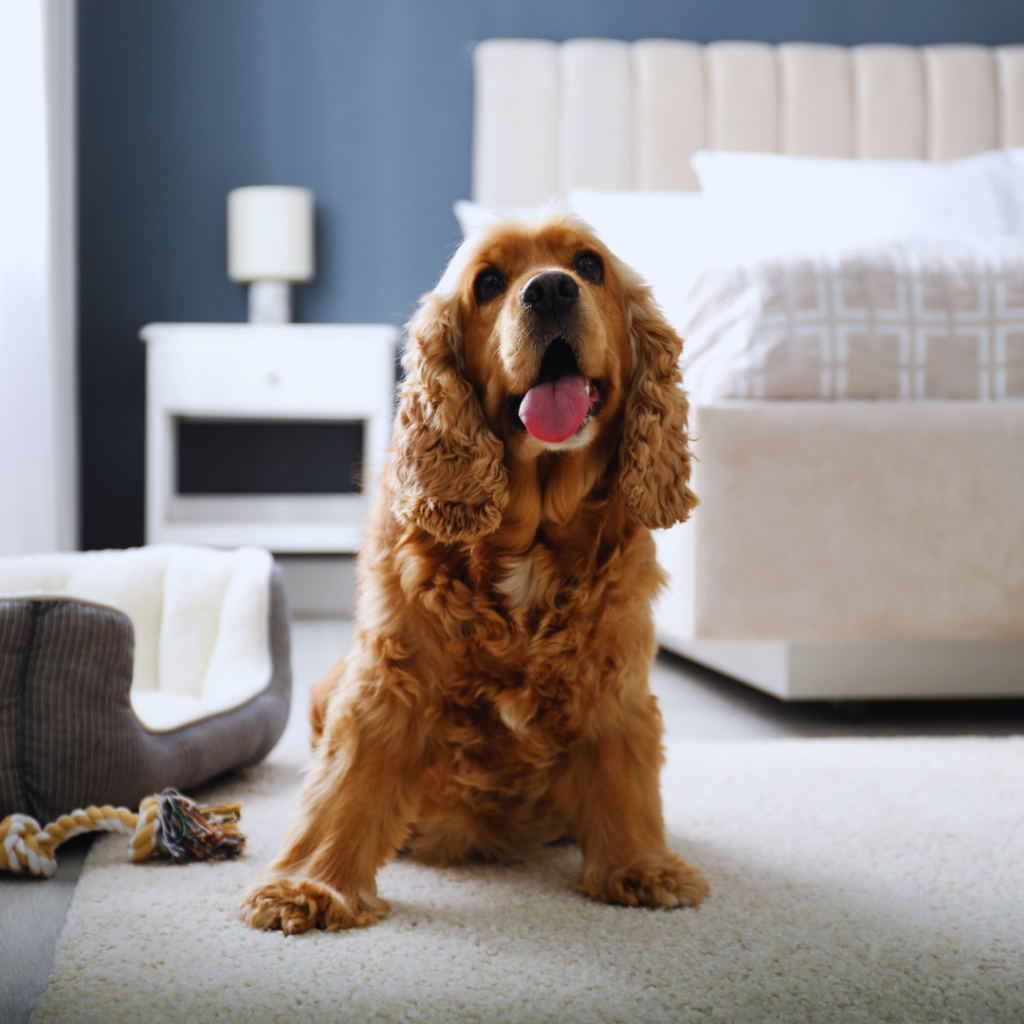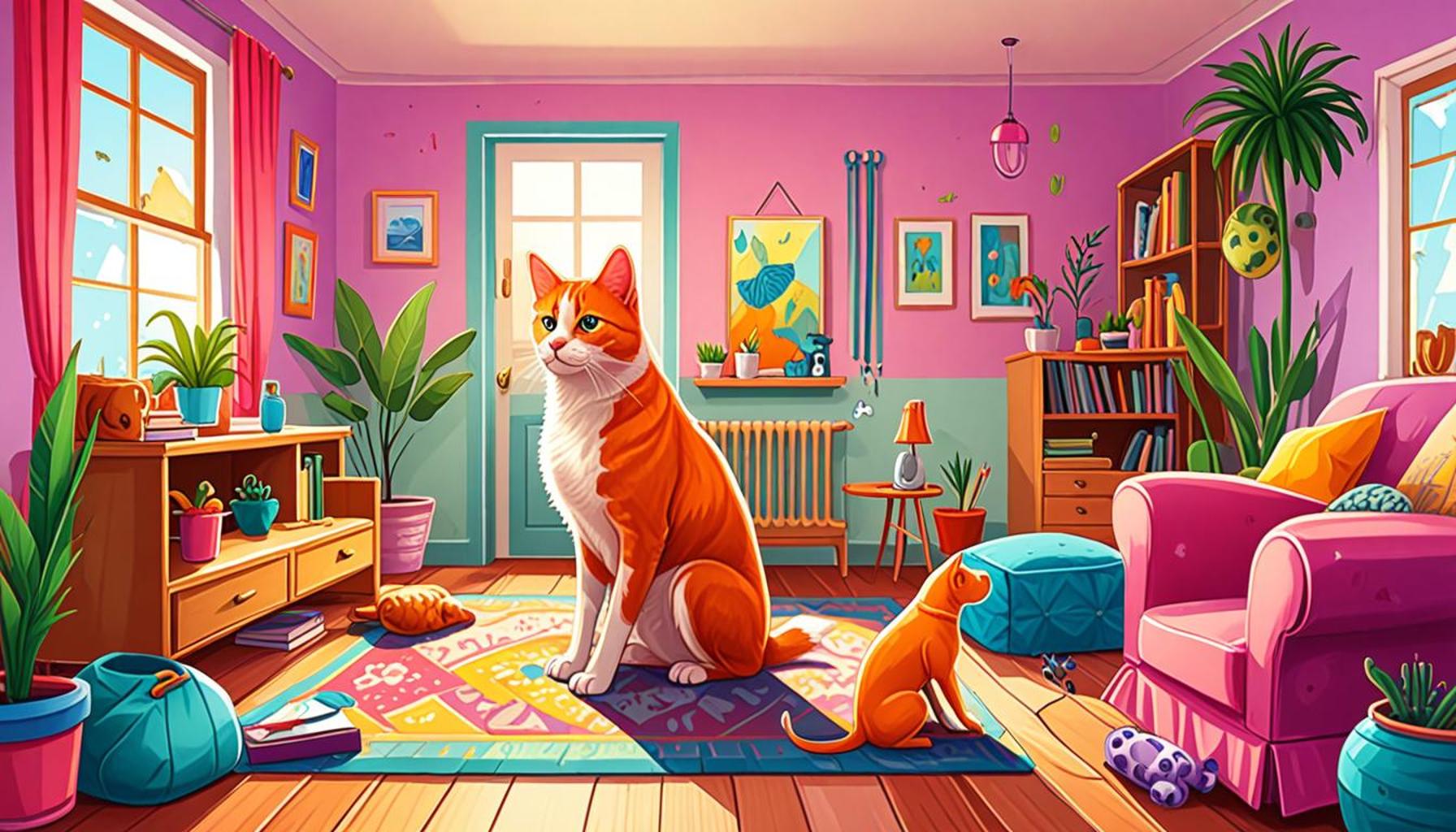Tips for Creating a Safe and Comfortable Environment for Your Pet

Creating a Safe and Comfortable Space for Your Furry Friend
Every pet deserves a secure and cozy home where they can thrive. The environment you provide plays a crucial role in their overall well-being. By making thoughtful adjustments, you can ensure your pet feels safe and happy.
Why It Matters
A safe and comfortable environment protects your pet from potential hazards and stress. Moreover, it fosters a sense of belonging and encourages positive behavior, which can lead to a happier, more well-adjusted animal. For example, a dog that feels secure is less likely to develop anxiety-related behaviors, such as excessive barking or destructive chewing. On the other hand, a nervous cat might hide or refuse to engage with family members. Consider the following aspects while designing your pet’s sanctuary:
- Safety: It’s imperative to remove harmful substances such as cleaning supplies, chemicals, and toxic plants that could be ingestible. Furthermore, ensure that windows and doors are secured to prevent accidental escapes. Use safety gates if necessary to keep your pet confined to suitable areas, especially in homes with stairs or hazardous items.
- Comfort: Provide a designated space with soft bedding and familiar toys. A cozy bed in a quiet corner can serve as a comforting haven. Cats especially appreciate secluded spots where they can retreat when feeling overwhelmed. Moreover, rotating toys can also keep them engaged and provide mental stimulation.
- Social Interaction: Facilitate time with family to strengthen bonds. Engaging in play or simply spending quiet time together can significantly improve your pet’s emotional health. For instance, dogs often thrive on routine family interactions, whether through walks or play sessions. This interaction nurtures trust and loyalty.
Essential Factors to Consider
Creating a suitable habitat involves several key factors that must be taken into account:
- Space: Provide enough room for your pet to move comfortably. For larger breeds, such as Great Danes or German Shepherds, having ample indoor and outdoor space is crucial. Even smaller dogs benefit from having areas to roam and play, as this promotes physical and mental health.
- Temperature: Maintain a climate conducive to your pet’s health. Keep homes cool for pets that are sensitive to heat, such as brachycephalic breeds like bulldogs. On colder days, ensure there is a warm space for your pet to snuggle up, as some breeds, like Chihuahuas, are particularly vulnerable to low temperatures.
- Cleanliness: Regularly clean the area to prevent illness and discomfort. This includes routine vacuuming to manage shedding, washing bedding frequently to eliminate odors, and ensuring litter boxes are cleaned daily to promote good hygiene for cats.
In the following sections, we will explore detailed tips and insights to achieve an optimal living environment for your beloved companion. With simple yet effective strategies, you can create a sanctuary where your pet feels loved and protected. Investing in your pet’s well-being not only benefits them but enhances your bond, ensuring a happy and harmonious household for everyone involved.
LEARN MORE: Click here for effective strategies

Understanding Your Pet’s Basic Needs
To create a safe and comfortable environment for your pet, it’s crucial to understand their basic needs, which vary significantly across different species and breeds. By catering to these basic necessities, you provide your pet not only with physical safety but also with emotional well-being. Here are fundamental aspects you should consider:
- Nutrition: A balanced diet is essential for your pet’s health. Consult with a veterinarian to determine the right type of food according to your pet’s age, breed, and specific health concerns. Quality nutrition supports their immune system, energy levels, and overall vitality.
- Exercise: Regular physical activity is vital, especially for dogs who require daily walks and playtime to burn off energy. Lack of exercise can lead to obesity and behavioral issues. Additionally, providing a variety of toys can encourage indoor play and mental stimulation. Cats also benefit from interactive play to satisfy their hunting instincts.
- Healthcare: Regular vet check-ups and vaccinations are key components of your pet’s safety. Keeping up with flea, tick, and heartworm preventatives can shield your pet from harmful diseases. Be vigilant about any health changes, as early detection can make a significant difference.
Creating Safe Zones
Designating specific areas in your home as “pet zones” can greatly enhance your furry friend’s comfort. This helps in managing their movements and reduces anxiety about their surroundings:
- Pet Beds: Investing in a high-quality pet bed can provide your furry companion with an inviting spot to rest. Look for beds that are orthopedic for older pets or with removable covers for easy cleaning.
- Restricted Areas: Utilize baby gates or pet barriers to prevent pets from accessing potentially dangerous areas such as kitchens or staircases. Clear pathways can also help in preventing accidents, especially for older animals.
- Outdoor Safety: If your home has a yard, ensure it is secure with fences to prevent pets from wandering off. Regularly check for any openings or gaps. Additionally, be cautious of toxic plants, chemicals, and harmful substances that you might use for lawn care.
By thoughtfully catering to your pet’s basic needs and creating dedicated spaces, you’re laying the groundwork for a safe environment. Remember, each pet is unique and may have specific requirements. Pay attention to their habits and preferences to tailor the safest experience for them. In the next section, we will delve deeper into sensory considerations, helping you create an even more inviting environment that aligns with your pet’s natural instincts and behaviors.
| Category | Advantages |
|---|---|
| Safe Spaces | Creating designated safe spaces allows pets to retreat and feel secure, reducing anxiety during stressful situations. |
| Comfortable Bedding | Providing high-quality bedding helps regulate body temperature and promotes relaxation, ensuring better sleep patterns for your pet. |
When considering tips for creating a safe and comfortable environment for your pet, it’s important to remember that every pet has unique needs. Utilizing safe spaces not only encourages relaxation but also reinforces their sense of security. This aspect is especially crucial during thunderstorms or fireworks, as pets often seek refuge when startled. Moreover, a focus on comfortable bedding can significantly enhance your pet’s quality of life. Investing in durable, washable materials that cater to their size will offer them a designated spot that feels personal and inviting. A cozy bed can be beneficial for older pets experiencing joint issues, making it a vital consideration for any pet owner. By following these foundational tips, you can create an enriching environment that nurtures your pet’s well-being, encouraging them to thrive in a secure home.
DISCOVER MORE: Click here to learn about essential nutrients for your pets
Catering to Sensory Needs
Creating a safe and comfortable environment extends beyond physical space; it encompasses your pet’s sensory experiences as well. Pets perceive the world around them differently than humans, relying heavily on their senses of sight, smell, hearing, and touch. Understanding and catering to these sensory needs can help you create a nurturing environment that promotes their well-being.
Sound Control
Many pets are sensitive to loud noises, which can be a significant source of anxiety. Identify potential sound stressors in your home, such as loud appliances, music, or television. Additionally, fireworks and thunderstorms can be especially distressing for animals. Here are a few strategies you can implement:
- White Noise Machines: Utilizing a white noise machine or playing soft music can drown out unsettling noises, helping your pet feel calmer. The steady hum can mask sudden loud sounds that may cause stress.
- Safe Spaces: Create a cozy fortress from which your pet can retreat during troubling sounds. This might be a den-like space with their favorite blanket or toys, where they feel secure and shielded from the intensity of external noise.
Visual Stimulation
Visual elements of your home also contribute to a comfortable environment for your pet. While some areas might benefit from natural light, it is essential to ensure that pets have spaces where they can escape bright sunlight, which may cause discomfort. Consider the following:
- Window Perches: For cats, providing a safe window perch allows them to watch the outside world while basking in natural light. Be cautious about window screens and ensure a barrier to prevent any falls.
- Adjust Lighting: For dogs and cats alike, soft lighting is more inviting and can reduce stress levels. If your pet is nervous during the night, consider using night lights in areas where they feel most comfortable.
Enhancing Touch and Texture
The surface textures in your home can greatly impact your pet’s comfort level. Pets enjoy different textures for various purposes, whether it be for scratching, cuddling, or playing:
- Scratching Posts: For cats, a good scratching post is essential. It allows them to maintain their claws and provides an outlet for their instinctual behavior. Look for posts with different textures and heights to engage your cat’s interests.
- Comfortable Bedding: As mentioned earlier, a quality pet bed can make a significant difference, but it’s also crucial to choose materials that are soft and inviting. Observe your pet’s preferences for fabric (fleece, cotton, etc.) to ensure they select their cozy spot.
Moreover, consider incorporating play elements that satisfy instinctual behaviors, such as tunnels for hiding and climbing for indoor cats, or agility tools for dogs to enhance their playtime experience. Attention to the sensory details of your pet’s environment will not only foster their happiness but also contribute to their overall sense of security.
By understanding and catering to your pet’s sensory experiences, you can create an environment that addresses their unique instincts and behaviors. The result will be a harmonious home that allows your furry friend to thrive in safety and comfort.
DIVE DEEPER: Click here to learn about balanced nutrition
Concluding Thoughts on Creating a Safe and Comfortable Environment for Your Pet
In summary, creating a safe and comfortable environment for your pet is an essential aspect of responsible pet ownership. It involves understanding their unique needs, both physical and sensory, to cultivate a nurturing space where they can flourish. By ensuring a secure environment free from hazards and manipulating sensory elements like sound, light, and texture, you contribute significantly to your pet’s emotional and physical well-being.
Moreover, incorporating interactive play opportunities and cozy resting spots can enhance your pet’s overall quality of life. Remember that every pet is different; take the time to observe their reactions and preferences to customize their surroundings further. From providing stimulating toys and safe hideaways to maintaining a quiet sanctuary away from noise, each adjustment plays a crucial role in helping your pet feel at ease.
Importantly, staying informed about your furry friend’s specific requirements through ongoing research and communication with veterinarians can lead to a better understanding of their needs. Ultimately, your dedication to creating a haven for your pet contributes to a harmonized household where companionship, safety, and joy reign supreme. By prioritizing these elements, you open the door to a deeper bond with your pet, ensuring they experience happiness and comfort every day.


